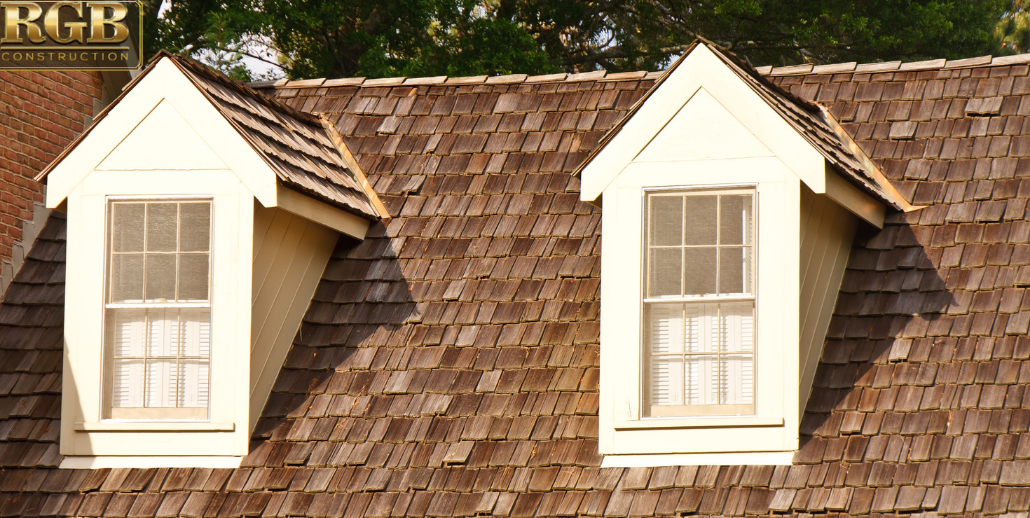If you are seriously considering roof repair, it is probably obvious to you that your roof is suffering from some kind of issue. Depending on what the potential problem or problems might be, think about it before going into repair mode. If you are unsure of the condition of your roof and whether it needs repairs or a full replacement, review the following before making a commitment:
Benefits of A New Roof
Yes, replacing the entire roof can be much more expensive than doing minor patch jobs. You can save money, though, by avoiding the cost of multiple extensive repairs.
Here are some other benefits of roof replacement:
- Curb appeal: Most of what people see of your home is the roof, so having a brand new roof when you are trying to sell is going to be advantageous. You can also boost aesthetics by getting higher quality roofing and a wider range of colors.
- Energy efficiency: Cut cooling and heating costs with updated roofing. Current technologies have introduced shingles that are much more resilient and efficient.
- Less stress: Imagine not having to worry if the next rainstorm is going to cause a leak!
Determining Whether To Repair Or Replace Your Roof
Now that you know some reasons why getting a new roof instead of replacing your current one could be beneficial, let’s have a look at some factors that can help you decide what to do:
How Old Is Your Roof?
Depending on the age of your roof and the kind of roof you have, most shingled roofs last about 15 years. If you maintain your roof, it can last considerably longer, but as the year’s pass, ongoing maintenance will likely have to occur, and the repair costs will increase. If you think you just need patching or have to go as far as a total replacement because of extensive damage, consider consulting a residential roofer in your area as to what they would suggest.
Check The Interior Of Your Roof
You want to check the interior of your roof for signs of damage, particularly after periods of rain and bad weather. Use a flashlight to closely inspect the attic, crawl spaces, rafters, decking, insulation or other spaces to determine if any leakage has occurred or whether the areas have gotten soaked or completely damaged. Water stains in any of those areas are good damage indicators. Mold can also be a factor, so check for signs of that.
Obviously, from a safety standpoint, checking the exterior of your roof does not mean walking on it. That should be left to the professionals. You can carry out your own inspection at the ground level, through a window, or by using binoculars to get a more detailed look. Any roof, whether new or old, will change over time, so be aware of what those changes can bring. Of course, you want to look for any major damage caused by severe weather or fire as well as look for missing or damaged shingles, bald spots, loss of granules, or deterioration of the shingles themselves. Also, if there is abnormal shingle curling, replacement may be necessary, though some curling is to be expected as the roof ages.
You should also look for any signs of pest-related damage. Small animals and insects have a penchant for making homes out of your home, and while tiny holes may be repairable, once the invaders have started working towards the internal structure, you could have significant damage. If left neglected, that damage could worsen.
Lastly, don’t forget about moss. The aesthetic appeal may be there, but the dangers are not worth the risk. Moss holds onto excess moisture, which can saturate the shingles and get into the more vulnerable materials of your roof. In most cases, damage caused by moss and mold growth is superficial enough to be brushed away with water and bleach then patched up. More severe cases could result in entire sections of the roof being rendered useless and needing replacement.
Warning:
**Attempting to remove the black streaks on your roof with bleach may void the Manufacturer’s Warranty on your shingles.
More About Today’s “Did You Know?”
The Gutters Need Replacing, Too
Take a look at the gutters. While it may seem that gutter issues are an isolated problem, any gutter issues could also radiate outwards to the roof. This is especially true if your gutters are overflowing or holding stagnant water. The standing water could be exposing sections of the roof to excessive moisture, particularly along the fascia.
Anytime your gutters need to be replaced, bring in a roofer to also inspect the roof. They will tell you if the gutters have affected the roof in any way. For instance, if the gutters were peeled away from the roof by an ice dam or damaged from high winds, that could have also damaged the roofing materials. Depending on the extent of the damage, you may need some quick repairs.
Don’t forget that maintenance is integral to prolonging the functionality of both your gutters and your roof.
Consider Your Budget
Roof replacement or roof repair? For many, it boils down to one thing: money. Few people have enough money saved up to deal with minor emergencies, let alone a total roof replacement for their home. In that event, selecting repairs over replacement could save you hundreds or thousands.
Therefore, if you are dealing with financial uncertainty, it is best to repair your roof as problems arise. You can further save money by performing routine maintenance. As long as you are consistent, you can circumvent many preventable roofing problems.
How Long Do You Plan To Live At The Address?
Is this a forever home or are you merely biding your time before up- or downgrading? Moving out within 5 years of replacing an entire roof is a waste of time and money. On the flip side, if the condition of the roof is atrocious, you will find it challenging to sell your home.
There is an easy way to determine whether you should replace and repair your roof if you don’t plan on sticking around. First, if the roof has been installed for 15-20 years and has already had minor repairs done, get a roof inspector to look at it. The inspector will tell you if anything needs immediate attention. Additionally, set up a maintenance routine and have a roofer come once or twice a year.
That should prevent damages from piling up so you can move out without needing to dump money into a new roof. On the other hand, if the roof looks worn down and ready to collapse, get a new roof installed. Not only will you sell your home faster, but, because newer roofing increases the home value, about 68 percent of the cost is returned to you.
Can You Patch Up Places?
Depending on the condition of your roof, patching may be effective. Be sure to consult a roofing professional first, though. They will be able to inspect the roof for other damages that could impede repairs, such as sagging and dampness.
Patching can save you money since you are only removing the parts of the roof that are endangered. The downside to this is that the shingles or roofing materials you get may not match what you currently have. Aesthetics could be reduced.
Putting A Roof Over An Existing Roof
Another method homeowners opt for in lieu of total roof replacement is to put another laying of roofing over what already exists. Unfortunately, another layer is just a bandage over a gaping wound.
Yes, most local codes allow for there to be two layers of shingles on a home. That said, the risks are many. A double layer of shingles could be too heavy, and if the structural integrity of the roof has been compromised…you can probably guess what could happen.
Another downside is the labor cost. Think about how long it can take to get rid of a single roof. Now, double that. It is even more troubling when the damages haven’t been repaired and leaks happen. Then you have to do double the work to find the root of the issue.
If you are thinking of doubling up, consider replacement instead.
I Need Service Now
One morning, you may wake up to find that you are in a serious bind. There is a problem with the roof, but you have appointments scheduled or a plane to catch. What now?
- Ask Yourself This: Can the problem wait a few days? A week? A month or longer? There are some roofing issues that do not require immediate attention; but the longer you wait, the more severe the problem could become.
- Worst Case Scenario: You need to postpone whatever your plans were and get emergency repairs done. Roof replacement requires some scheduling and negotiation, so you should account for that when calling a roofing contractor.
What To Do If You Find Problems With Your Roof
Again, depending on the age of your roof, if you find any of the problems associated with the interior and exterior of the roof, reassess the factors given and go through the checklists. Most importantly, contact a professional for at least a thorough consultation and estimate as to what can be done concerning repair or replacement.
Roofing is not usually a five-minute job, so leave it to the professionals, and if you’re in the South Jersey area, and need immediate help, consult with the professionals at RGB Construction. Their helpful and experienced representatives will provide you with the answers you need, along with a fair estimate.










